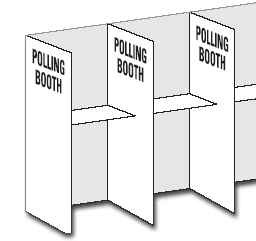Editorial: What is congressional apportionment?
The ISD Editorial Board explains the confusing process of congressional apportionment and the impact it has on our representation in government.
November 16, 2020
Let’s talk about the Electoral College. Actually, let’s not. Odds are, your mind is already made up with regards to this fundamental system. You probably have your reasons for thinking one way or the other. Maybe those reasons are facts or maybe they are just political talking points you’ve picked up in conversation. That’s why we aren’t going to discuss it. Everyone is already an expert and perfectly capable of explaining why the Electoral College does or doesn’t work.
So don’t send us letters about the Electoral College and don’t comment on this editorial with your ideas about the Electoral College or why ours are wrong or right, because this editorial is not about the Electoral College.
It’s about congressional apportionment.
But wait, isn’t the Electoral College tied to a state’s representatives in Congress? You tell us. That’s Electoral College crap, and that has nothing to do with the rest of this editorial.
So on to business. What is congressional apportionment? How does it work? And why should you care?
Congressional apportionment is the process by which the United States House of Representatives splits its 435 seats amongst the states. Congressional apportionment is the reason Iowa has four representatives.
How does this process work? Every 10 years, the United States federal government conducts the census and population totals are updated across the states. But our country does not grow cohesively. States with large populations grow quicker than states with smaller populations; that’s exponential growth.
Also, the country as a whole is growing, but the number of representatives is capped at 435. The result of this growth paired with a fixed number of representatives is that congressional districts’ populations are growing and a new size must be determined every 10 years. This is the process of congressional apportionment.
So how is this done? Currently, there exist two schools of thought on congressional apportionment: rounding fractions and ranking fractions. We’ll focus on the rounding methods because the current method, the Hill method, is one such.
The rounding methods all follow the same process, except for where they decide to draw the line for rounding. In elementary school, we draw this line at 1.5. This is the arithmetic mean of 1 and 2. You could also just round any decimal number up or down, so 1.1 and 1.9 both become 2 or 1, respectively. The final two methods round at 1.33 and 1.41, which are the harmonic and geometric means of 1 and 2.
So why must we pick a rounding point and what exactly are we rounding for? The Hill method for congressional apportionment requires “priority values,” which determine if a state has enough people to warrant another representative.
Via the Hill method, you must calculate enough priority values for the state with the largest number of representatives — in this case, 53 for California. With geometric mean of 0 and 1, 1 and 2, 2 and 3…52 and 53 calculated, we can get to distributing seats.
Every state gets one seat, regardless of population, so the process actually starts with the geometric mean of 1 and 2, and the process uses the inverse of the geometric mean. For the second seat, this number is 0.707. For the fourth seat, the number is 0.289. For the 50th seat, this number is 0.020. The population of every state is multiplied by each of these 52 (53 total minus the first seat that every state gets) numbers, and the results are ranked from highest to lowest. The top 385 (435 minus 50) numbers get a representative.
It should be clear that this process works because even large multipliers like 0.707 for the second seat when multiplied by a state population like Wyoming don’t produce a larger number than when 0.020 is multiplied by California’s population; thus, California gets 53 representatives and Wyoming gets one.
In theory, that is how the current system works, but the wording of the the method suggests it never actually works out that nicely: “Find a number so that when it is divided into each state’s population and resulting quotients are rounded at the geometric mean, the total number of seats will sum to 435. (In all cases where a state would be entitled to less than one seat, it receives one anyway because of the constitutional entitlement.)”
Herein lies the problem with congressional apportionment. It’s not actually a prescribed mathematical system but rather a vague method by which the federal government hopes to arrive at an appropriate number of seats.
After the process has been worked out the first time, if the number found is not 435, the process is tweaked and reworked until it does converge to 435. For a country that has sent many men to the moon, it’s pretty unfortunate that Congress is still filled using a guess and check system. Each state’s representation at the highest level of government is determined by this very system. Surely we could create something better?
If the whole idea of congressional apportionment still seems confusing, that’s because it is. And if you still think this editorial is about the Electoral College, you might be right. But hopefully you recognize how states assign electors may be simple, but how the federal government arrives at a total number of electors is all but simple.

















